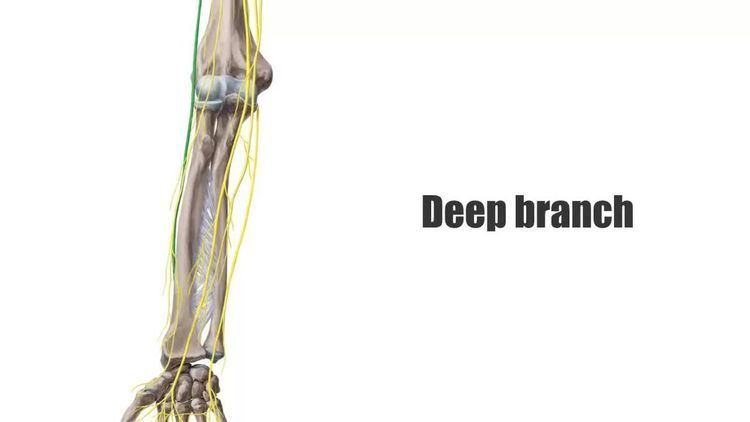Specialty neurology ICD-9-CM 354.3 MeSH D020425 | ICD-10 G56.3 eMedicine neuro/587 | |
 | ||
Radial neuropathy (or radial mononeuropathy) is a type of mononeuropathy which results from acute trauma to the radial nerve that extends the length of the arm. It is known as transient paresthesia when sensation is temporarily abnormal.
Contents
Signs/symptoms
Symptoms (and signs) of radial neuropathy vary depending on the severity of the trauma; however, common symptoms may include wrist drop, numbness (back of the hand and wrist), and inability to voluntarily straighten the fingers. Loss of wrist extension is due to loss of the ability to move of the posterior compartment of forearm muscles.
In the event of lacerations to the wrist area the symptom would therefore be sensory. Additionally, depending on the type of trauma other nerves may be affected such as the median nerve and axillary nerves.
Causes
There are many ways to acquire radial nerve neuropathy such as:
Mechanism
The mechanism of radial neuropathy is such that it can cause focal demyelination and axonal problems/degeneration (which is nerve fiber reaction to insult, and therefore axon death occurs). These would be caused via laceration or compression of the nerve in question.
Diagnosis
In terms of the diagnosis of radial neuropathy the following tests/exams can be done to ascertain the condition:
Treatment
The treatment and management of radial neuropathy can be achieved via the following methods:
Prognosis
In terms of prognosis radial neuropathy is not necessarily permanent, though sometimes there could be partial loss of movement/sensation.Complications may be possible deformity of the hand in some individuals.
If the injury is axonal (the underlying nerve fiber itself is damaged) then full recovery may take months or years ( or could be permanent). EMG and nerve conduction studies are typically performed to diagnose the extent and distribution of the damage, and to help with prognosis for recovery.
Culture and society
There are a number of terms used to describe radial nerve injuries, which are dependent on the causation factor such as:
